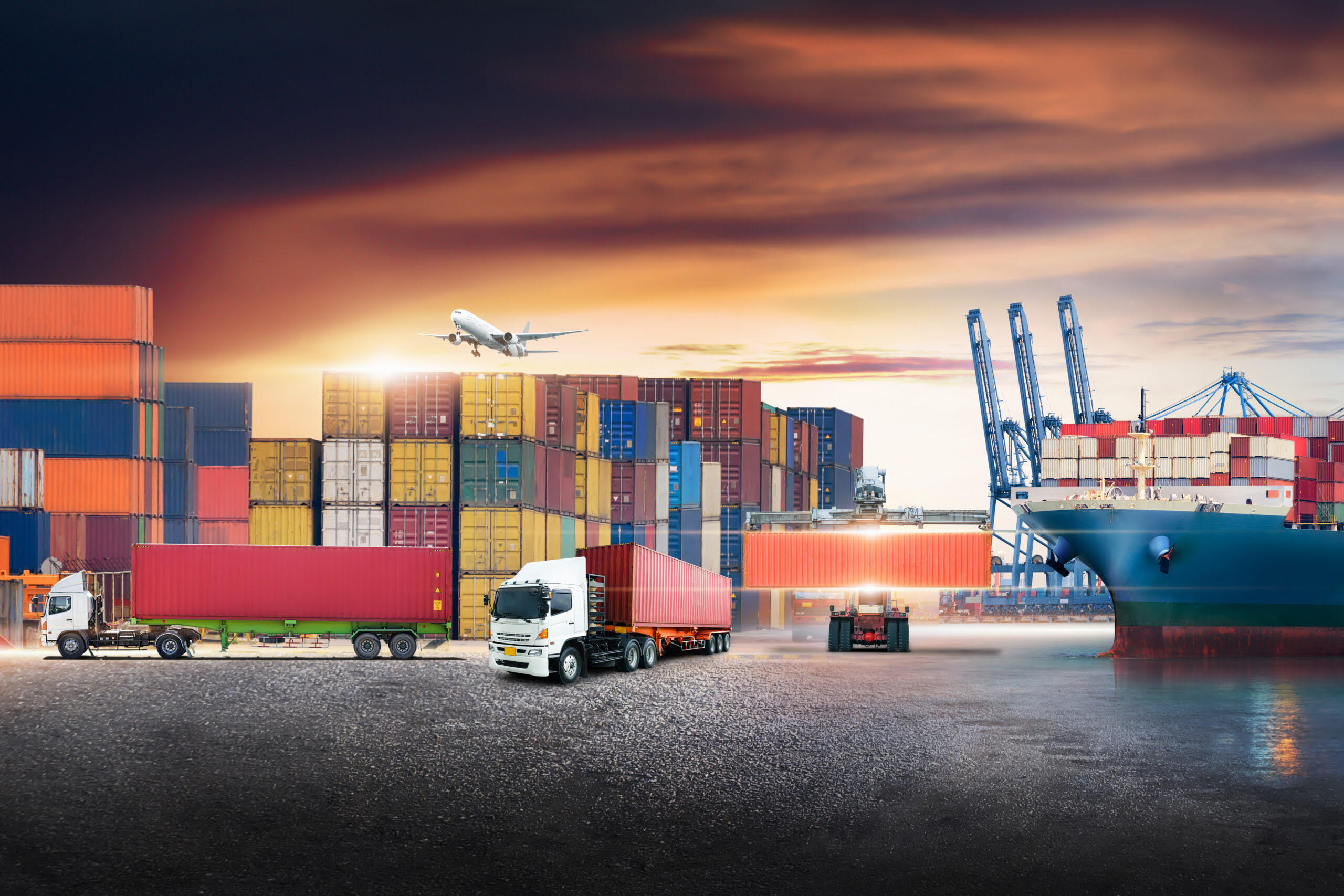Global Supply-Chain Problems Escalate, Threatening Economic Recovery
Component shortages, surging prices of raw materials and transportation backups compound the bottlenecks
Global supply-chain bottlenecks are feeding on one another, with shortages of components and surging prices of critical raw materials squeezing manufacturers around the world. The supply shocks are already showing signs of choking off the recovery in some regions. Part of the problem is a global economy that is out of sync on the pandemic, restrictions and recovery. Factories and retailers in Western economies that have largely emerged from lockdowns are eager for finished products, raw materials and components from longtime suppliers in Asia and elsewhere. But many countries in Asia are still in the throes of lockdowns and other coronavirus-related restrictions, constricting their ability to meet demand.
Meanwhile, global labor shortages, often the result of people leaving the workforce during the pandemic, are throwing further obstacles in the way of producers. The bottlenecks are forecast to constrain manufacturing output well into next year, hurting a sector that had until recently powered the global recovery. Global industrial output rose above its precrisis level in early 2021 but has since stagnated, according to the Kiel Institute for the World Economy, a German think tank. It recently lowered its forecast for world economic growth this year to 5.9% from 6.7%, in part due to supply-chain issues. Supply-chain knots have helped push inflation to multidecade highs in the U.S. and parts of Europe, weighing on consumer spending. Elevated inflation rates are already putting pressure on central banks, including the Federal Reserve, to start scaling back their aggressive pandemic stimulus policies, a further headwind to global growth. It is already too late to save all of the Christmas retail season in many cases, as overwhelmed world-wide transportation networks limit supply—down to the home décor. “If I can give one piece of advice to consumers right now, it is to find and buy your Christmas tree early,” said Jami Warner, executive director of the American Christmas Tree Association.
At the heart of the global gridlock is China, the world’s largest trading nation. Arriving ships often must quarantine for a week or more before they are allowed to dock. Disruptions to customs and port services add to delays. The more ships wait on the inbound side at Chinese ports, the longer it takes for them to start out again from China to the rest of the world, waiting for Chinese-made electronics, clothing and toys. Earlier this year it cost more than five times as much to ship goods from China to South America compared with last year’s pandemic low, according to U.N. Conference on Trade and Development data. Freight rates on the more heavily trafficked China-North America route more than doubled.
Beyond China, Covid-related factory closures in Malaysia have hit chip supplies to German car makers in a semiconductor market already hit by outages in Texas, Japan and Taiwan. A lockdown in Vietnam has created problems for Australian importers, say supply-chain specialists. In Indonesia, mining companies want more trucks to feed the world’s rising demand for coal and minerals. Yet the waiting list for new truck deliveries is nine months, producers say. Their own supply-chain problems make it harder to deliver the fuel and materials that would help resolve supply problems elsewhere, reinforcing the bottlenecks. Strikes and Covid-19 cases among port workers in Australia have curtailed operations. Passenger flights to the country, which used to be an option for air cargo shippers, are still mostly halted. “If it wasn’t on the water four weeks ago, it’s not going to be here for Christmas,” said Marcus Carmont, executive director at TMX Global, a supply-chain consulting firm in Melbourne. “The get-out-of-jail card to use a plane is not really a lever you can pull.”
China has added to the stresses with limits on electricity usage triggered by efforts to address climate change. The northwestern province of Shaanxi is one of the world’s largest producers of magnesium, a relatively low-cost mineral to which electric-vehicle battery makers have increasingly turned as demand for EVs rises. Last month, the economic planner in one of Shaanxi’s magnesium hubs ordered many producers to halt or reduce production to meet the region’s 2021 targets for limiting energy usage, according to a trader and Chinese media accounts of a government notice. The domestic price of magnesium in China was more than 60% higher in August compared with January, according to industry data. The magnesium shortage is one reason among many that may prevent consumers from finding the car they want around the world. Noriyuki Umezawa, manager of a Mazda dealership in the Tokyo suburb of Kashiwa, said that he was telling customers they would have to wait at least four to five months for delivery of popular models such as the CX-8 crossover sport-utility vehicle. More people have shown an interest in buying a car since the country lifted a state of emergency on Oct. 1 thanks to a drop in Covid-19 cases, said Mr. Umezawa. “Now we don’t have cars to sell,” he said.
Rakuten Mobile, a unit of Japanese e-commerce company Rakuten Group Inc. that is trying to establish itself as a nationwide cellphone service carrier, had hoped to pitch improved service this fall. But 10,000 of its base stations that would deliver speedy data downloads can’t be turned on because the company can’t get the chips to attach to their antennas, said a spokeswoman. Germany’s auto industry, which accounts for a big part of the country’s industrial output, has been furloughing workers on and off throughout the year as the supply of chips has ebbed and flowed. Auto makers have given priority to production of high-margin vehicles in a bid to soften the hit to earnings through lost sales. AlixPartners, a global industry consultant, last month said the global auto industry would lose 7.7 million vehicles world-wide, nearly 10% of projected production in 2021, as a result of the chip shortage. The loss of production and sales is expected to cost the global auto industry $210 billion in lost revenue this year, it said. Car makers also face disruptions in supplies of resin and steel, says Mark Wakefield of AlixPartners’ automotive and industrial practice.
In July, new car sales in France slid 35%, the steepest decline in Europe, while sales fell 25% in Germany, 29% in Spain, and 19% in Italy. In the United Kingdom, new car sales were down 30% in July. The decline continued in August when new car sales across Europe fell 18%, to 724,710 vehicles. “We are not demand-constrained, we are supply-constrained,” Daimler AG CEO Ola Källenius said in early September, adding that the chip supply squeeze would hit third-quarter sales and be felt into 2023. Germany’s economy is more reliant on manufacturing than many of its European peers. Industrial production there slumped by 4% in August compared with the previous month, leaving output 9% below its pre-pandemic level, the federal statistics agency said on Thursday. The weakness, it said, was driven by a slide in production of vehicles and vehicle parts. Supply constraints for manufacturers are squeezing margins and pushing up consumer prices, economists say. More than a quarter of companies have had to reduce or even stop production, according to a recent survey by the Association of German Chambers of Industry and Commerce.
In Sweden, the economy contracted by 3.8% in August compared with the previous month, pushing output below its pre-pandemic level, according to data from Statistics Sweden. Manufacturing output declined in a month that Volvo had to shut down car production due to the shortage of semiconductors. “The recovery in Sweden has reached its high-water mark and the near-term outlook is not as rosy as it seemed a few months ago,” said David Oxley, an economist with Capital Economics.
In the U.K., the Glasgow Distillery Co. was set for a long-planned launch of its Scotch whisky in the U.S. when supply-chain problems began hitting almost all parts of its business, forcing it to postpone the move. The whisky maker is finding it much harder to get on-time supplies of the bottles, labels and cardboard, essential to packaging its single malts, according to Liam Hughes, its co-founder. What took six weeks to secure can now sometimes take six months, and prices are higher. “Some of our suppliers have notified us of 10% increases,” he said. When the Glasgow-based company can get the supplies, it has to wait much longer for transportation to the distillery. Once the bottles are ready, global shipping congestion makes it up to five times more expensive for customers to take them from Britain to the U.S., Mr. Hughes said.
As of Thursday, there were 497 large container ships waiting to dock outside ports in Asia, Europe and North America, and the delay of vessels arriving into U.S. and Canadian ports from the Far East has increased from 14 hours in June of 2020 to almost 13 days this September, according to eeSea, which provides data on the container market. This summer, T&G Global Ltd., one of Australasia’s largest fruit suppliers, had containers of apples waiting in New Zealand ports up to four weeks to find a ship to take them to Los Angeles. The company usually ships around 800 40-foot containers of apples to the U.S. a year. With container ships held up outside of ports, T&G shifted some of its cargoes to reefer carriers, which the company had to charter out with other local exporters. These refrigeration vessels can dock in parts of a port that container ships don’t, allowing them to avoid some of the long delays. “It’s not good and it will take until later next year” to resolve, said Simon Beale, T&G’s logistics manager.
Source: https://www.wsj.com/articles/supply-chain-issues-car-chip-shortage-covid-manufacturing-global-economy-11633713877






